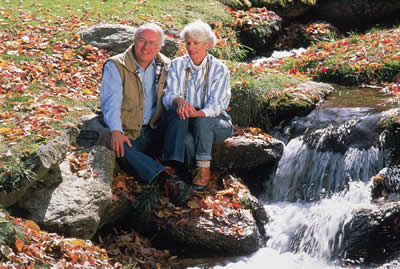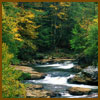|
Tinkerbelle's
Pond Tips
 Tinkerbelle Hughes Tinkerbelle Hughes
Time to switch to a fall fish food as your
koi and goldfish transition into winter. During the colder months it takes more time for them to digest food as their metabolism slows down. To help avoid digestive disorders and illness, it is important that the food is digested quickly. We carry Hai Feng, Microbe-Lift, and Tetra Pond Fall fish food.

To shop on-line click here
|
|
Prepare now for a cleaner and healthier pond in Spring
Microbe-Lift
Autumn Winter Prep helps accelerate the decomposition of leaves,
sediment, and other organic matter during the fall and winter months.
The cellulase enzymes along with cellulase producing bacteria, are the
key to accelerating the break down of leaves, organic matter and sludge
all winter long.
To shop on-line click here
|
Pond Netting
Pond netting helps to keep debris and predators out of the pond. A wide range of sizes are available to cover the entire pond surface.
 To shop on-line click here To shop on-line click here |
October Classes
Saturday 3th
10 am
Winterizing Your Pond
Saturday 10th
10 pm
Pondless Urns and Bubbling Rocks
Saturday 17th 10 am
Building Ponds & Waterfalls
Saturday 24th
10 Am
Winterizing Your Pond
October 31st
10 am
Building Ponds & Waterfalls
Preregistion is requested
All classes are free, 1 to 2 hours long, at our nursery
| |
|
|
|
|
Fall Clean-up

This is an excellent time to catch up on maintenance left over from summer. Any debris or decomposing plant material that accumulates in the pond can not only be harmful to the health of your fish, it can also feed algae when spring arrives. A simple skim net will allow you to remove any surface debris and material that has collected on the bottom. Preventing further debris from falling into the pond is another area not to be overlooked. This can be accomplished with netting to cover the surface of the pond to prevent leaves from falling into the water. While not visually appealing, the netting only needs to remain over the pond for a few weeks to catch most of the leaves.
Filters: Most filters are removed from the pond, cleaned, and then stored until the arrival of spring. In the case of a biological filter, the beneficial bacteria are inactive below 50-60° water temperature. As a result, it is not necessary to operate the filter throughout the winter. Ultra-violet lights are another component that it is best to remove for the winter. If you choose to leave any filter outside through the winter, it is important to either dry it completely or else continuously circulate water through it to prevent freezing or cracking.
Pumps: You may choose to remove your pump prior to cold weather, but in our mild climate, you can enjoy water features year around. In short freezes, a running waterfall can successfully keep an open hole in any ice that forms on the pond surface. However, during a prolonged freeze pumps should be turned off. If your pond completely freezes over, water from the waterfall can spill across the pond surface and out into the surrounding garden. In the case of a stream, the water can freeze in the streambed before it can return to the pond. In either case, the result is an empty pond and possible damage to your pump. Pumps plumbed with flexible PVC hose can be turned off anytime without worry; however, hard PVC pipe can freeze and crack without water circulation. If you have used hard PVC we recommend that you turn off the pump anyway. It is much cheaper to replace cracked pipe than a burned out pump. Remember, never let the pump freeze.
For more on pond care click here
|
Feeding Fish in the Winter:
As cold weather approaches, fish metabolism will slow down. For this reason, it is important to have a thermometer to monitor the water temperature and feed fish accordingly. As the water cools, gradually cut back on how often you feed. Below 50° stop feeding altogether. It is also a good idea to switch to a wheat germ based food that is easier to digest, yet still allows the fish to continue to bulk up before entering dormancy.
Water temperature guidline:
50 degrees and under - No food at all
51 to 60 degrees- Feed once a week
60 to 65 degrees - Feed every 3 to 4 days
65 to 75 degrees - Feed every day
75 to 80 degrees - Feed 2 - 3 times a day
80 to 85 degrees - Feed 2 - 3 times a day and increase amount to no more than fish can eat in 5 minutes.
85 degrees and above - Decrease amount due to possible oxygen depletion
Fish and Water Circulation: Waterfalls or fountains add cold air into the pond water. As a result, many people with koi choose to disconnect those features and just circulate water below the surface. Koi owners will also lift the pump off the bottom of the pond in order to leave a layer of water undisturbed for the dormant fish. Depending on the stocking level of fish, it should not cause problems if the surface of the pond freezes over for a short period of time; however, many people use a floating pond de-icer to keep a section of the surface open to allow for gas exchange.
For more on pond care click here
|
|
Winter Care For Plants:
Many people are unsure how to care for their plants in the winter. The proper care depends on the type of plant.There are three main categories of pond plants: hardy, semi-tropical, and tropical.
Hardy plants are those that will winter over in your pond without any special care required, then will regrow in the spring. The majority of plants we sell fall into this category including hardy water lilies. Hardy lilies will winter over as long as their crown does not freeze. In our Willamette Valley climate, a depth of 18-24" is usually sufficient. There are a few hardy plants that require some protection. These include Saururus cernuus (Lizard's Tail) and Pontaderia cordata (Pickerel). These varieties should be dropped deeper so that the top of the pot is at least six inches under the water to protect the plant from freezing.
Semi-tropical plants are those that will winter over with some protection. Although many pond owners simply drop them to the deepest section of the pond (at least 18" deep), it is safer to bring the plant into an unheated garage or cold frame. It is important not to let the plant completely dry out.
Tropical water plants don't go dormant in the winter. For this reason, they require a protected environment such as a heated greenhouse where they can receive necessary warmth and light to continue growing. Many tropical plants can also make good houseplants through the winter given the right conditions.
Most floating plants are also tropical. The most popular are Eichhornia crassipes (Water Hyacinth) and Pistia stratoides (Water Lettuce). Due to their high light and water temperature requirements, it is best to treat them as annuals and remove them from the pond in fall.
All of our plants come with plant tags that tell what category they are in. Our staff is happy to answer any questions you may have about particular plants.

|
|
Fountain Covers for Winterizing
The Fountain Cover is designed to provide maximum protection
of your cast-stone fountain that otherwise would be exposed to harsh
winter weather and ice damage. The covers are specifically designed and
shaped for fountains and provide bottom-tie nylon drawstrings for a
snug and tight fit.
Manufactured of durable, reinforced polyethylene,
the Henri Fountain Covers are waterproof and UV stabilized, and they
may be reused year after year. Five fountain cover
sizes are available:
|
Our Mailing Address 25289 SW Stafford Rd, Tualatin, OR 97062
Spring and Summer Hours
Monday - Saturday
9 to 6
Sunday
10 to 5
Our Telephone
503-638-1709
Copyright (C) 2008 Hughes Water Gardens. All rights reserved
| |
|
|
|